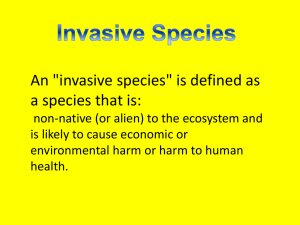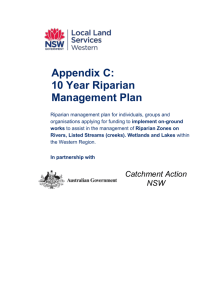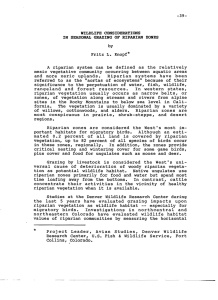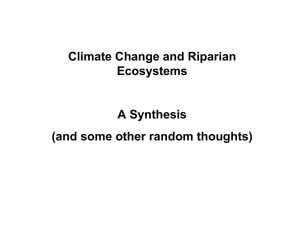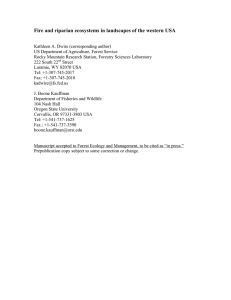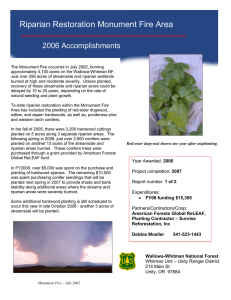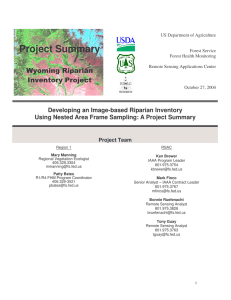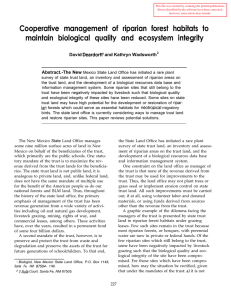-37 IMPACTS OF PRESENT MANAGEMENT ON ...
advertisement
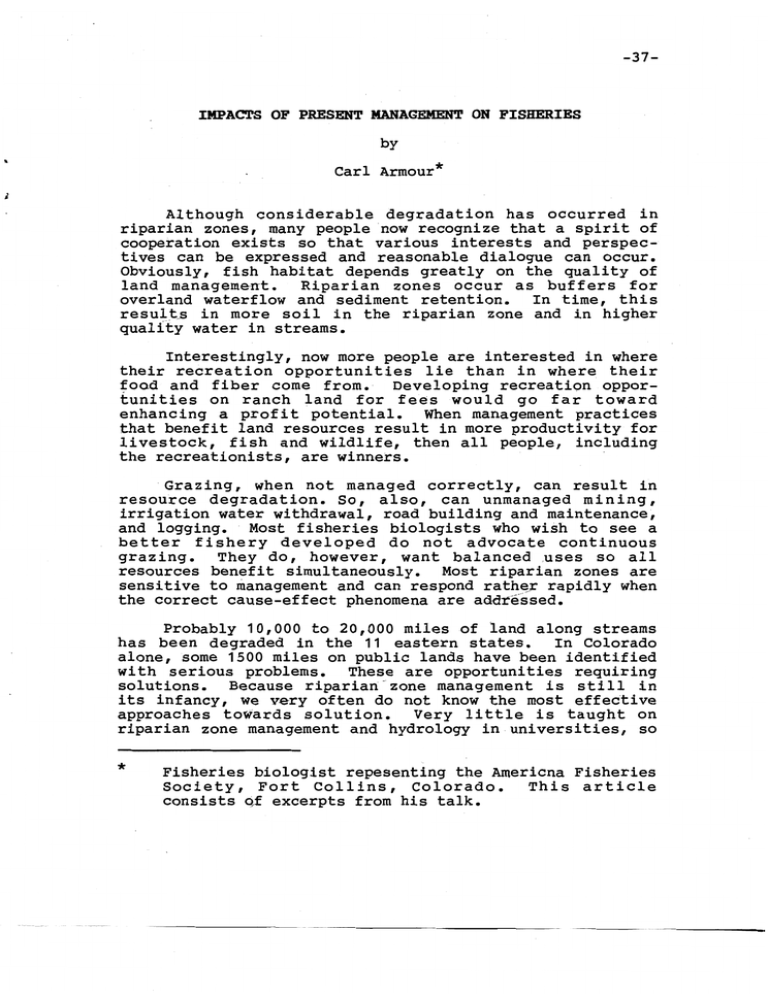
-37­ IMPACTS OF PRESENT MANAGEMENT ON FISHERIES by Carl Armour* 1 Although considerable degradation has occurred in riparian zones, many people now recognize that a spirit of cooperation exists so that various interests and perspec­ tives can be expressed and reasonable dialogue can occur. Obviously, fish habitat depends greatly on the quality of land management. Riparian zones occur as buffers for overland waterflow and sediment retention. In time, this resultB in more soil in the riparian zone and in higher quality water in streams. Interestingly, now more people are interested in where their recreation opportunities lie than in where their food and fiber come from. Developing recreation oppor­ tunities on ranch land for fees would go far toward enhancing a profit potential. When management practices that benefit land resources result in more productivity for livestock, fish and wildlife, then all people, including the recreationists, are winners. Grazing, when not managed correctly, can result in resource degradation. So, also, can unmanaged mining, irrigation water withdrawal, road building and maintenance, and logging. Most fisheries biologists who wish to see a better fishery developed do not advocate continuous grazing. They do, however, want balanced .uses so all resources benefit simultaneously. Most riparian zones are sensitive to management and can respond rather rapidly when the correct cause-effect phenomena are addressed. Probably 10,000 to 20,000 miles of land along streams has been degraded in the 11 eastern states. In Colorado alone, some 1500 miles on public lands have been identified with serious problems. These are opportunities requiring solutions. Because riparian -- zone management is still in its infancy, we very often do not know the most effective approaches towards solution. Very little is taught on riparian zone management and hydrology in universities, so * Fisheries biologist repesenting tne Americna Fisheries Society, Fort Collins, Colorado. This article consists qf excerpts from his talk. -38­ information must be gathered through trial and error. The best approaches are to get enough people together form different disciplines and address problems on a site-specific basis. Much money has been spent (and is being spent) on various riparian projects. Often the results that people expected did not come about but since no monitoring was built into the management programs, we do not know why failures occurred Cause-effect relationships often are not even recognized, much less understood. Some research needs are: (1) Fencing - what are the various alternatives for livestock control? In what kinds of situations is fencing most appropriate? How much should be fenced when fencing is used? What innovations can be generated to make livestock more compatible with fishery needs? (2) How can livestock grazing be managed so as to positively impact fisheries? For example, it is possible to favorably alter water temperatures under very cold conditions by removing some shade through grazing? (3) What techniques need to be developed to reduce the recovery time for degraded streams? Many millions of dollars have been spent and little good accomplished. (4) How much forage use will streambanks support without causing unacceptable change? (5) What kinds of incentives can we find to give ranchers motivation for improving riparian habitat? Without the potential for profitability, little will be accomplished. (6) Can we generate pos~ible tax advantages for improved riparian zone management?










